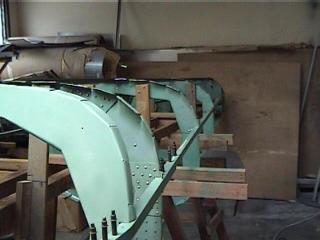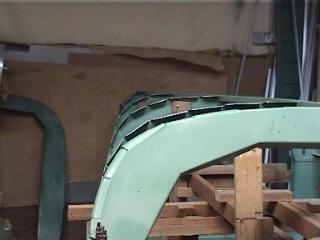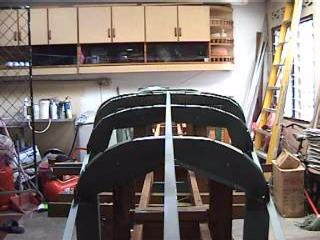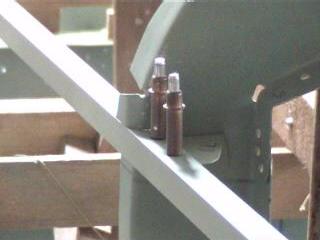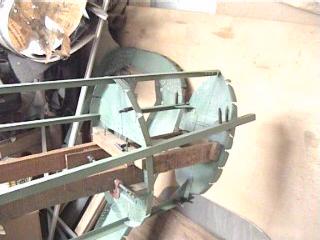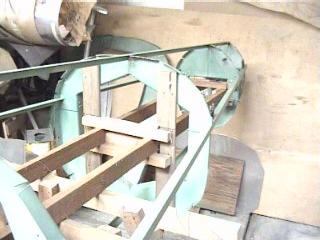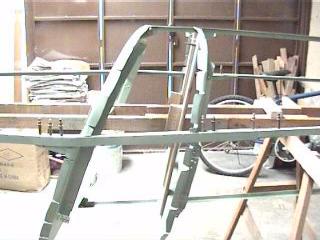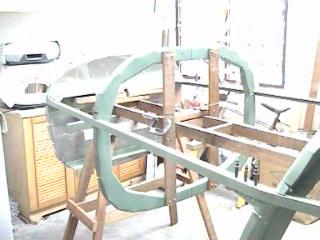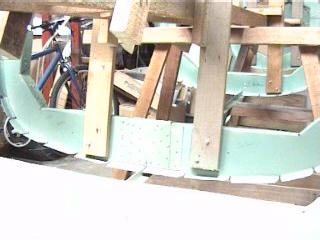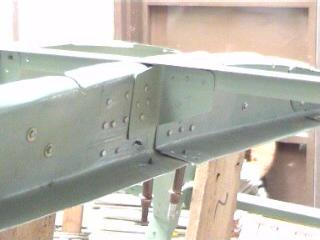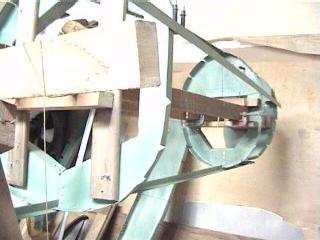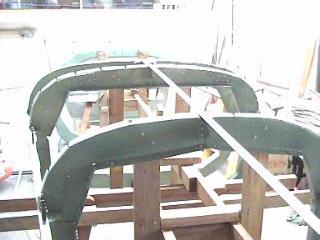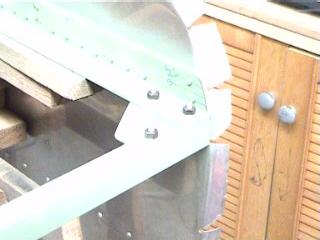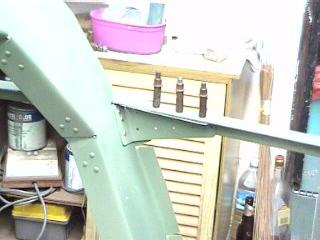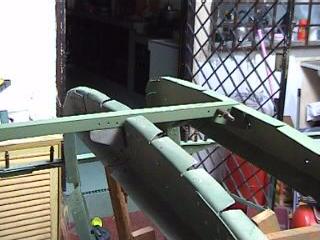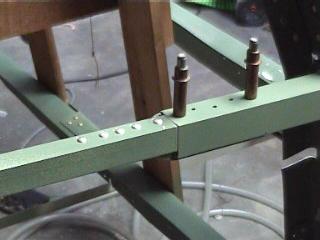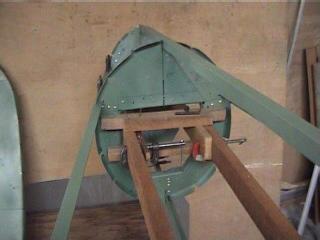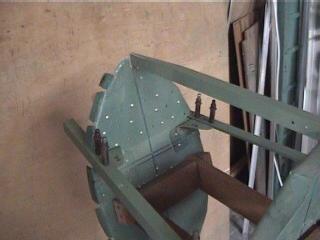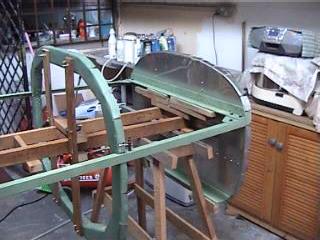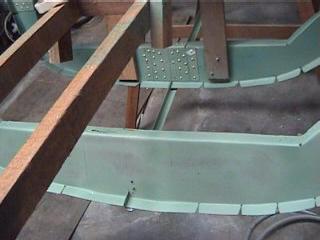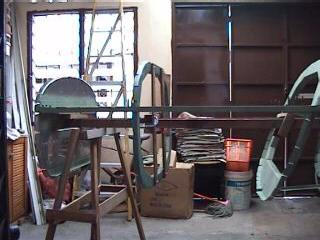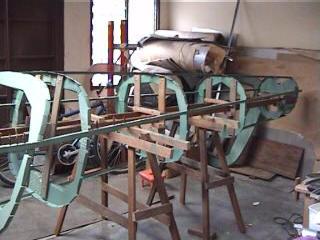Bulkheads was the next job that I undertook. Bought a 1/4 inch thick 4' x 8' plywood (plans call for 1/2" thickness) drew and cut out the patterns. The plots sometimes appear to be connecting straight lines, so I rounded them to achieve general rounding of the bulkhead outline. I managed to get a sheet of 2024-T3 0.040 (4' x 12') and started cutting the pieces. I made a blunder while bending the inner flanges of Bulkhead 3. I had to recover from it by the using patches. My bulkheads 3,7 & 8 were all made up of more than two pieces at least. Spraying 'etch primer' , Deburring and Riveting were the new skill I learnt.
First I started making the bulkhead templates, I tried to find 1/2 inch plywood, found them to be too costly, so worked with 1/4 inch 3' x 6' sheet. Finished drawing and cutting them up in a few days. I drew the plots both on the left and right hemispheres. I suggest the plot be done on a paper, one side as found in the plans, then doubling it on the plywood with reference to the center vertical line. This will result in a more symmetrical shape. The completed bulkhead templates are seen in the background.
After several months of hunting I got one sheet of 2024-T3 0.040" sheet. I followed the cutting plan provided by the designer in the plans. I was so scared that I may make a slip while cutting it, this sheet cost me a bomb. So I requested my Guru named Muthalib (he had built two RV6 and a KR2 already) to help me initiate the job. Also witnessing this opening ceremony is Victor Craig (A Canadian building a Murphy Rebel here at the KITFAM...sorry Craig reflection of your face on the sheet is not that clear). Just like any new venture I had to dirty my hands and that was done when I started cutting metal, now after several months I am beginning to think I am a expert in it.
Only four of my bulkheads are made from a single piece metal, the remaining five are made of two or more pieces. I made full use of the 0.040" sheet. The cutting plan specifies 1.5 sheet of 4' x 12' 0.040" but I had to use at least two full sheets to make all the parts that required to be made out of 0.040" thickness metal. Be very careful while bending the tabs in the Bulkheads. Inspite of checking and counter-checking several times I bent the tabs in Bulkhead 3 wrongly. I had to do some recovery processes to save the piece. The plans call for 0.75" flange (outer perimeter) but I was not confident, so I used a 1" flange, hoping that after drilling the skin attach holes, I can trim away the excess metal. This is not aiming for zero defect production I suppose.
Drilling and Deburring the holes and edges is also a new skill I learnt. My guru Muthalib really grilled me on this, he would call for rework every time I approach him for a quality check. I left it to my son Ganesh to deburr the holes for me, as well and minor sanding jobs. The youngster is not showing much interest in the project. I guess, the interest will be kindled as soon as the shape of the plane appears in the workshop, and even more when the engine is installed.
Priming is also another trade that I learnt from Muthalib, his demonstration
of the process lasted 10 minutes. I used the auto primer called 'etch
primer' greenish in color. My sophisticated dust-free space can be set up in
two seconds at the back of my house, I do this process early morning, in
open air when the dust in the air will be minimal. However the drying time
of this primer is just two minutes. My neighbours are still in the dark as
to what I am up to. I have yet to revealed my towering dreams to them..
Riveting is the best part of the building process that I love very much.
This is also a new skill I picked up from my guru. The air compressor had to
be placed in a small compartment under the staircase, and closed air-tight
to prevent the noise from being heard next door. It is now operating with a
silent purr. The rivet gun I bought (US$40.00) is also silent. The rivet set
was bought from Wicks. Before cutting the skin parts always measure the
length of the perimeter of each bulkhead, it should match that of the skin
width that is suppose to sit around it. If it does not match, bingo...you
have prevented a disaster. My finished bulkheads are now a pleasure to look
at. They are stiff and sturdy. Have you notices the bulkheads of the RV6A?.
They are made of thinner metal, with a 3/16 inch inner flange I guess.
Compared to that, the SPRINT bulkheads appear to be an overkill.
I obtained the 0.025" stainless steel sheet locally, the specs are as
specified by the designer for the firewall. The tabs were the easiest to
bend, in fact I bent them with my fingers. The stiffeners on the engine side
was 0.040" angles, but I have used 0.063" angles that were available to me.
The firewall bearing a few stiffeners and Landing gear support parts

